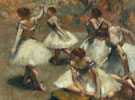Children’s Clothes
by Chen Haiyan
When a garment is no longer an accessory to human body decoration, what is a garment in an artist’s eyes?
Apparently, children’s clothes are an interesting and meaningful subject. In garment design, a child’s garment is one of the most arduous for designers. It involves function, psychic gratification, conflict conciliation between customers and users, and the general aesthetics of the time, especially the understanding and expectation for the children from the adult. Children’clothes are constantly changing in this period of great mental and physical change in one’s life. Thus, the design often requires a precise age division for specific orientation and reference.
In terms of literature, a child’s garment stands for the history of growth, for memory and nostalgia, it stands for the loss of sexual uncertainty, gradually becoming a demigod cut apart in the punishment by God, it stands for the mental loss of naivety, and stands for the growing scale of the lightness and heaviness borne by life. Since children’s clothes are an individual history for an adult, they must be old. They have two meanings: one is old (objectively); the other is historical (consciously). When Zhang Weixing began to work on his daughter’s childhood clothes, he asked friends for their children’s clothes or even planned to collect old people’s childhood clothes, children’s clothes no longer refer to body decoration tailored and sewn in fabric materials, but become the testimony of history and memory. They seem to resolutely enlighten us from images in literature towards a metaphysical philosophy.
The physical turns into metaphysical; the most colorful children’s garment in design is purified into black-and-white symbols. It’s a product under the historical background of a collective memory loss as well as an enlightenment following exhaustion and confusion in the formalities of life. Therefore, I feel relief for a lighter explanation for this oppressive subject. Moreover, I especially appreciate Zhang Weixing’s instinctive and transcendent vision between the inside and outside of the material world, even unwilling to exclude the appearance of ordinary details in the images which tend to be neglected in our daily life: clothes-hangers, scattered flowers, loose threads, drapes, brush strokes, emulsion washes, faculae, scales, shapes and structures. Although defined as finished by artist, the works are not really completed. Instead, they are interpreted by the audience. In other words, a piece of work carries different meanings and definitions for different viewers. I prefer not to confer with the artist in order to keep my own “interpretation” of the work intact. However it may easily cause misunderstandings I may regret, but I believe this is quite worthwhile, because it is also a process of recreation that I’m using words to express my understanding of the series at this moment. For most times, this ‘recreation’ by the audience may stain and defame or flatter the original works, but it is exactly what art desperately pursues and expresses - the original intention of exploration, discovery, innovation, meditation and realization. No matter how childishly innocent or sophisticatedly commercial, these art pieces are shadow imaged phantom children’s clothes!
Like the falling autumn petals and catkins in broken dreams, the floating negative grains are far from our normal understanding about perfect photography. We even find it hard to strictly define it as photography since Zhang Weixing doesn’t use the camera to catch images. He just experimentally puts children’s clothes onto a sheet of 40x60 photo paper, exposes a shadow image in the darkroom and through complex procedures of controlling the developer and fixer, creates a kind of full-size image between photocopy, phantom, photograph and X-ray. This process is subject to some photographic limitations such as size, exposure time, the number of times the paper is exposured, ingredients of the emulsions, tiredness of the emulsions, orders of applying the emulsions. Besides, the fabric materials, fiber density, pattern, longitude-latitude manufacture, chance and the inability to create duplicates also affect the imaging process.
In many uncontrollable experiments, Zhang Wei Xing strives to express a kind of purity through sharp and blur, in a limited 3D space effect, by a direct interpretation different from normal garment display. You can regard the works as naturally overlapped transparent textures,compositions of points, lines and planes , gradations of light and shade, or relations between life and illusion. In conclusion, no matter how complicated or simple the children’s clothes may be, without flesh to fill them, the physical features of fabrics in a shimmering light have dissimilated into an illusive fluid of light and shadow. Somehow black and white, the clothes, without the owner’s body, coagulates into an imaginary existence, like lint-white wings fluttering gracefully in the dark night. Those ‘babies’ who once wore the clothes are standing calmly but concernedly outside of the pictures, as one of us, staring with wet eyes at the scattered and suspended grains of memory in the sky. The grains gradually gather, constitute fragments and transmute unbridled and soul-stirring past times. With different emotions welling up in the mind, I firmly believe that time is the only supernatural existence and memory makes it creep.
Translation: Fan Chen




